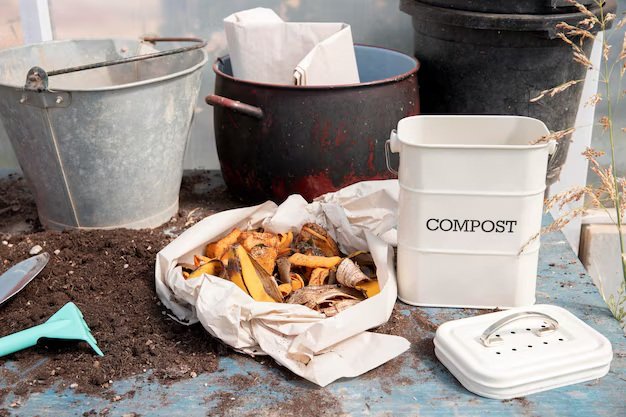How to Get Rid of Gnats on Plants Naturally
If you’ve ever found yourself staring at tiny flies hovering around your houseplants, you’re not alone. Many of us have faced the frustration of fungus gnats invading our indoor gardens. These little pests thrive in moist soil, laying eggs that hatch into larvae, which can damage plant roots and hinder growth.
There are proven, natural, science-backed methods that are not only effective but also safer for our plants and homes. I’ll walk you through expert advice and practical applications supported by real research. Whether you’re a seasoned plant parent or just starting out, the strategies outlined here aim to help you manage and prevent gnat infestations without resorting to harsh chemicals.
By understanding the habits of these pests and implementing trusted solutions, we can keep our indoor gardens healthy and gnat-free.

In This Article
- What Are Gnats and Why Are They a Problem for Plants?
- Step 1: Drying Out the Soil – The Simplest, Most Overlooked Fix
- Step 2: Natural Soil Amendments to Deter Fungus Gnat Larvae
- Step 3: Natural Traps for Adult Gnats
- Step 4: Biological Control Methods
- Step 5: Preventing Reinfestation
- Step 5: Gentle Remedies from Your Kitchen
- Match Your Gnat Treatment to Your Plant Type
- Conclusion:
What Are Gnats and Why Are They a Problem for Plants?
Gnats are tiny, mosquito-like flying insects, often mistaken for fruit flies, that belong to families such as Sciaridae and Mycetophilidae. If you’ve noticed them hovering around your houseplants, you’re likely dealing with fungus gnats, particularly those from the Sciaridae family, which are the most common indoors.
Adult gnats are relatively harmless; they don’t bite or feed on plants. However, their larvae, which dwell in the top layers of moist soil, can cause significant damage. These larvae feed on fungi, decaying organic matter, and, unfortunately, the delicate root hairs of your plants. This feeding can stunt plant growth, cause yellowing leaves, and in severe cases, lead to plant death, especially in young or stressed plants.
The life cycle of a fungus gnat is rapid, completing in about 20 to 28 days, depending on temperature. Females lay eggs in moist soil, and within days, larvae emerge to begin feeding. After passing through four larval stages, they pupate and emerge as adults, ready to continue the cycle.
Table: Gnat Infestation Warning Signs and What They Mean
| Sign | What It Means |
|---|---|
| Tiny black flies around the soil | Adult fungus gnats seeking moist areas to lay eggs. |
| Wilting despite watering | Larvae feeding on roots, impairing water uptake. |
| Yellowing leaves | Nutrient uptake hindered due to root damage. |
| Slow growth | Plant stress from root damage caused by larvae. |
Step 1: Drying Out the Soil – The Simplest, Most Overlooked Fix
If you’re like I was, you might be watering your plants with love… and accidentally inviting gnats to the party. One of the easiest (yet often ignored) ways to deal with fungus gnats is to dry out the soil, especially the top layer where they lay their eggs.
When I switched to bottom watering and made a conscious effort to let the top inch of soil dry out completely between waterings, I noticed fewer gnats almost immediately. It was like flipping a switch. Fewer adult gnats showed up, and the whole cycle began to break.
Scientific Backing: Fungus gnat eggs and larvae need moisture to survive. According to the University of California’s Integrated Pest Management (IPM) program, larvae struggle to develop in dry soil, and their survival rates drop significantly without consistent surface moisture.
Action Steps:
- Let the top 1–2 inches of soil dry out completely before watering again.
- Use bottom watering—place your plant pot in a shallow dish of water and let it absorb moisture from the bottom up. This keeps the surface dry while still hydrating the roots where it matters most.
Step 2: Natural Soil Amendments to Deter Fungus Gnat Larvae
Once I tackled the moisture issue, I realized I needed to go a step further to protect my plants. Incorporating natural soil amendments became my next line of defense. Here’s what worked for me:
Diatomaceous Earth (DE)
Diatomaceous Earth is a fine, powdery substance made from fossilized algae. Its microscopic, razor-sharp particles are harmless to humans and pets but lethal to soft-bodied insects like fungus gnat larvae. When sprinkled on the soil surface, DE damages the larvae’s exoskeletons, causing them to dehydrate and die. It’s crucial to use food-grade DE and reapply it after watering, as moisture reduces its effectiveness.
Neem Cake, Oil, or Powder
Neem, derived from the Azadirachta indica tree, is known for its pest-repelling properties. Neem cake, a byproduct of neem oil extraction, contains compounds that disrupt the hormonal systems of insect larvae, preventing them from maturing. Incorporating neem cake into the soil can significantly reduce gnat populations. A studyhighlighted neem cake’s effectiveness in controlling various pests.
Sand or Horticultural Grit
Applying a ½ to 1-inch layer of coarse sand or horticultural grit on top of the soil creates a dry, inhospitable environment for adult gnats to lay eggs. This barrier also hinders emerging larvae from reaching the surface. It’s essential to use coarse sand, as fine sand can compact and retain moisture, counteracting its benefits
Step 3: Natural Traps for Adult Gnats
Yellow Sticky Traps
Yellow sticky traps are bright cards coated with a non-toxic adhesive. They’re particularly effective because many flying pests, including fungus gnats, are attracted to the color yellow. When placed near your plants, these traps can capture adult gnats, helping to reduce their population. According to the UCIPM program, yellow sticky traps are useful for monitoring and managing various flying insect pests.
How to Use:
- Place the traps near the base of your plants or hang them just above the foliage.
- Replace the traps when they’re covered with insects or after a couple of weeks.

Apple Cider Vinegar Trap
Apple cider vinegar (ACV) traps are a simple and effective DIY solution. The vinegar’s scent attracts gnats, and the addition of dish soap breaks the surface tension, causing the gnats to sink and drown.
How to Make (Two Methods):
1. Plastic Wrap Method
- Pour about 1/4 cup of apple cider vinegar into a shallow bowl.
- Add a drop of liquid dish soap (this breaks the surface tension so gnats can’t escape).
- Cover the bowl with plastic wrap and poke small holes in the top using a toothpick or fork.
- Set the trap near the affected plant.
2. Paper Funnel Method
- Pour 1/4 cup of apple cider vinegar into a jar or glass.
- Add a drop of liquid dish soap.
- Roll a piece of paper into a cone shape (funnel) with a small hole at the pointy end.
- Place the funnel into the jar with the narrow end down, but not touching the liquid.
- Gnats will fly in through the funnel and won’t be able to fly back out.

Step 4: Biological Control Methods
If you’ve tried drying out the soil and setting up traps but still find those pesky fungus gnats lingering, it’s time to consider biological control methods. These natural solutions target the larvae in the soil, breaking the life cycle without resorting to harsh chemicals.
Beneficial Nematodes (Steinernema feltiae)
Think of these microscopic worms as tiny warriors in your soil. Once introduced, they seek out fungus gnat larvae, enter their bodies, and release bacteria that kill the host within days. This method is safe for your plants, pets, and you.
In real-world applications, such as those by Koppert Biological Systems, these nematodes have shown significant effectiveness in controlling fungus gnat populations in greenhouse settings.
To use them, mix the nematodes with water and apply to the soil. They work best in moist conditions and temperatures between 12°C and 25°C.
Bacillus thuringiensis israelensis (BTi)
BTi is a naturally occurring soil bacterium that specifically targets fungus gnat larvae. When the larvae ingest BTi spores, toxins disrupt their digestive systems, leading to death.
According to the U.S. Environmental Protection Agency, BTi is non-toxic to humans, animals, and beneficial insects, making it a safe choice for indoor and outdoor use.
You can find BTi in products like mosquito dunks. Simply crush a dunk and sprinkle it on the soil or mix with water and apply as a drench. It’s an effective way to reduce larvae populations without harming your plants.
Step 5: Preventing Reinfestation
Sterilize New Potting Mix
Fungus gnat eggs can sometimes be present in commercial potting soil. To eliminate potential pests, sterilize your potting mix by heating it to 180°F (82°C) for 30 minutes. This process kills harmful organisms without damaging the soil’s beneficial properties. Allow the soil to cool before using it for planting.
Clean Drainage Trays Regularly
Stagnant water in drainage trays creates a breeding ground for fungus gnats. Empty and clean these trays regularly to prevent moisture buildup. Ensuring proper drainage and avoiding overwatering are key steps in maintaining a dry environment that deters gnat reproduction.
Quarantine New Plants
Before introducing new plants to your collection, quarantine them for at least two weeks. During this period, monitor for signs of pests or diseases. This precaution helps prevent the spread of infestations to your existing plants.
Step 5: Gentle Remedies from Your Kitchen
Chamomile Tea
Chamomile isn’t just for relaxation; it has antifungal properties that can help deter fungus gnats. Brew a strong cup of chamomile tea, let it cool, and use it to water your plants. This can reduce fungal growth in the soil, making it less attractive to gnats. While scientific studies specifically on chamomile tea’s effect on fungus gnats are limited, its antifungal properties are well-documented in horticultural practices.
Hydrogen Peroxide Solution
A diluted hydrogen peroxide solution can effectively kill gnat larvae in the soil. The University of Alaska Fairbanks suggests mixing one part 3% hydrogen peroxide with four parts water and using this solution to water your plants. The hydrogen peroxide will fizz upon contact with organic matter, killing larvae without harming the plant. This method is widely recommended by gardening experts for its efficacy and safety when used correctly.
Ground Cinnamon
Sprinkling ground cinnamon on the soil surface can help reduce mold and fungal growth, thanks to its natural antifungal properties. This creates a less hospitable environment for fungus gnats, though it does not kill existing larvae. According to experts cited by The Spruce, including horticulturist Justin Hancock from Costa Farms, cinnamon can support gnat control as part of an integrated approach, but should not be relied upon as a standalone solution.
Match Your Gnat Treatment to Your Plant Type
| Plant Type | Best Gnat Treatment | Caution |
|---|---|---|
| Succulents | Dry soil + yellow sticky traps | Avoid neem oil; it can cause leaf burn due to its oil content and sun exposure. |
| Tropical Plants | Neem oil spray + bottom watering | Ensure roots don’t sit in water to prevent rot; allow soil to dry between waterings. |
| Herbs | Chamomile tea + diluted hydrogen peroxide | Avoid strong chemicals; use mild solutions to prevent affecting flavor and growth. |
| Flowering Plants | Ground cinnamon + sticky traps | Avoid using nematodes during flowering; they may interfere with pollination. |
Conclusion:
Getting rid of gnats doesn’t mean waging war with chemicals. Nature gives us effective tools—if we know how to use them. From drying soil and applying neem to enlisting the help of microbes and worms, you can eliminate gnats sustainably.
I haven’t seen a gnat near my plants in over two years. My kitchen garden is thriving—and chemical-free.







